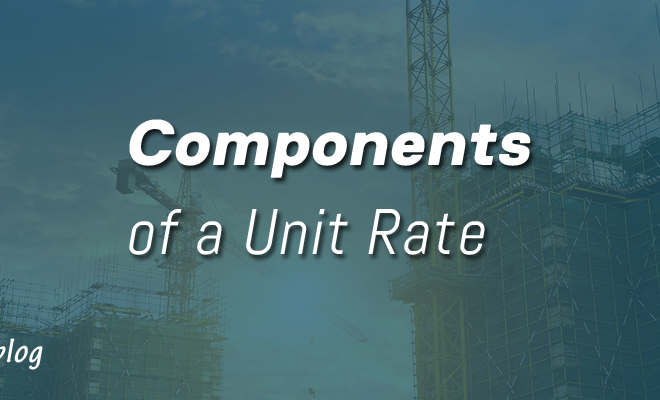Variations in Construction Projects: What Influences their Frequency of Occurrence?
Variations are inevitable in construction projects. This is because the construction industry is very complicated and unpredictable. The occurrence of these variations affects the project’s deadlines and estimated costs.
Also, the frequency of their occurrence varies from one project to another depending on various factors. These factors include the following:
- Nature of Works
- The complexity of the Project
- Procurement method employed
1. Nature of Works
Variation orders are frequently issued in construction projects where there are numerous unanticipated circumstances.
The following are the circumstances where the nature of construction works may influence the occurrence of variations in a project:
- Works involving large-scale earth excavations,
- Building works requiring specialized labour outside the scope of the designer’s skills,
- The presence of provisional quantities or sums in a contract, and
- Projects which have a high-level uncertainty.
Works Involving Large-Scale Earth Excavation
When implementing works that involve large-scale excavations and the use of heavy machinery, the scope at the time of tendering and contract signing may not be clear.
For example, rocks may be encountered during excavation that the team may not have envisioned. The uncertainty of what lies in the ground during the exercise usually is high and may vary the contract, even in instances where proper geotechnical surveys were conducted.
Building Works Requiring Specialized Labour Outside the Scope of the Designer’s Skills
When the nature of work requires the use of specialized labour, the frequency of occurrence of the variation orders will go up.
The specialized labour force is often expensive and, in many circumstances, works that require this kind of labour force may have to be varied exceedingly when they are not foreseen during the initial drafting of the contract.
The Presence of Provisional Quantities or Sums in a Contract
Among the three sums that you will see in a bill of quantities, provisional sums account for the costs of execution of work which cannot be entirely foreseen, defined, or detailed at the time the tender documents are issued.
Further, where site conditions may influence the building quantities, provisional quantities are included to help in projecting the expected costs. This is possible where information is insufficient during tendering or works cannot be adequately predicted before works begin on site.
An example is the substructure works in a building project. You will see this section marked as all provisional, meaning the quantities in the contract will be remeasured and readjusted according to the conditions that will be met on-site.
Therefore, the presence of provisional quantities and sums in a contract is a clear indication of the possibility of the introduction of variations in the project.
Projects Which Have a High-Level Uncertainty
Uncertainty in a project can be attributed to the following possible causes:
- Incomplete or unclear specifications of the tasks to be performed,
- Managers lack familiarity with the inputs and the project environment,
- Lack of uniformity: such as when the material to be worked with, the teams involved and their roles keep varying with place and time, and
- The unpredictability of the project environment – such as the effect of adverse weather.
The presence of these uncertainties means that it is not possible to come up with the most accurate predictions of the expected costs to be incurred in the project or a fixed scope of work.
The scope and the costs will vary based on what is encountered during the project implementation phase and the response and adaptation measures approved by the contract administrator.
2. The Complexity of the Project
A construction project involves multi-variate professionals and organisations coming together for a specific period and disbanding when the project is completed.
These construction project stakeholders bring with them to the project their unique management structures, and technical and technological competencies that may not always match with each other. Therefore, challenges will arise in making sure there is interoperability of methods and techniques and that all project team members are in sync.
As discussed, the complexities arising from management aspects will be seen in areas such as how one company communicates and shares project information, responsibility allocation, decision-making channels, and task delegation aspects.
On the other hand, technological complexities and challenges could be seen in construction processes and methodologies, the tools used and the special skills required to execute the project.
Consequently, these complexities directly influence the frequency of occurrence of variations from one project to another.
Project complexity is brought about by the high demand for the following deliverables:
- Speed in construction,
- Cost and quality control,
- Health and Safety in the workplace, and
- Avoidance of disputes.
Speed in Construction
Complex projects tend to come with a lot of uncertainties because of the number of parties and activities involved. When the project is lagging behind schedule, the team can opt to speed up the construction by adopting various strategies.
These strategies may include the following:
- Using high-quality materials that may not be easy to break. This comes with a lot of cost implications and also changes in the original specifications; hence the variation orders,
- Using more advanced construction technology or digital technology to achieve speed, while maintaining the specified quality,
- Increasing the manpower, and
- Sometimes when the project is very complex, there may be a need to simplify the project to an extent, this may necessitate variation orders.
Cost and Quality Control
During the implementation of complex projects, costs may spill over and go above the initial budgets. Therefore, cost consultants will have to come up with ways to minimize costs.
When cost overruns occur, they may vary the contract. Also, the need to manage them may require deviation from the initial specifications to rectify the situation.
Some of the ways that can be employed include the following:
- Using alternative construction technologies to achieve the same quality but at a relatively low cost.
- Using alternative materials to achieve acceptable quality at a relatively low cost
The application of the above measures will vary the contract.
Health and Safety in the Workplace
Complex projects may require the use of more specialized safety equipment that may be very expensive. They may not vary the contract when they have already been taken into account. However, when they are not accounted for during the documentation stage, they will vary the contract when introduced during the implementation phase.
Avoidance of Disputes
When the consultant team is keen on avoiding disputes, variation orders will have to occur frequently.
This is a team that will want to be very accommodating to all the needs of the client even though it might be a stretch. Or a team that might be very accommodating to the contractor to avoid conflicts.
3. The Procurement Method Employed
The method used to complete the project varies depending on the project. This is typically a method of procurement that specifies the type of agreement that will be made between participants or parties to the contract.
Variation orders may be issued more frequently under one procurement process than under another.
Non-traditional procurement methods are more likely to contain errors, omissions, and alterations than traditional methods.
Traditional Methods of Procurement
This is sometimes referred to as design–bid–build. It is the most commonly used procurement route for construction works.
Under this method, the client appoints all consultants directly or through a lead consultant, then tender documents are prepared and bidders are later invited to submit bids for the works.
Through issuing instructions, variations, and other means, the conventional procurement route does permit some flexibility post-tender.
Non-Traditional Methods of Procurement
The non-traditional methods of procurement do not follow the steps of design-bid-build. It may have a wholesome solution of design, specification, consultancy, project management, and construction services all under one roof.
These non-traditional procurement methods have evolved to suit more complex projects.
With the non-traditional procurement method, construction can overlap design and this may bring about a lot of variations. Though it may be argued that they may not be variations if they have not been explicitly outlined.
Conclusion
We have seen that construction projects are complex and require proper planning to ensure they are successful. Their success is pegged on how producing the specified quality of work, within the estimated budgets and project timelines.
Also, if the scope of the work, and the quality of the project schedule are altered at any stage of the project, it will be said that variations have occurred in this project. The frequency of the occurrence of these variations will change from one project to another.
This frequency is influenced by factors such as the nature of construction works, the complexity of the project and the procurement methods involved.
Cosmas Karisa
I’m a Quantity Surveying graduate from the University of Nairobi with more than five years of office and construction site experience. I have been in charge of several construction projects that have informed my expertise in matters of construction contracts, cost control, project management, and sustainable design research. Also, I teach construction technology on my YouTube Channel.
Tags In
Related Posts
Leave a Reply Cancel reply
Search
Popular Categories
- ARCHICAD Tutorials (4)
- Construction (17)
- Construction IT (14)
- Construction Law (4)
- Cost Management (15)
- Tutorials (5)





